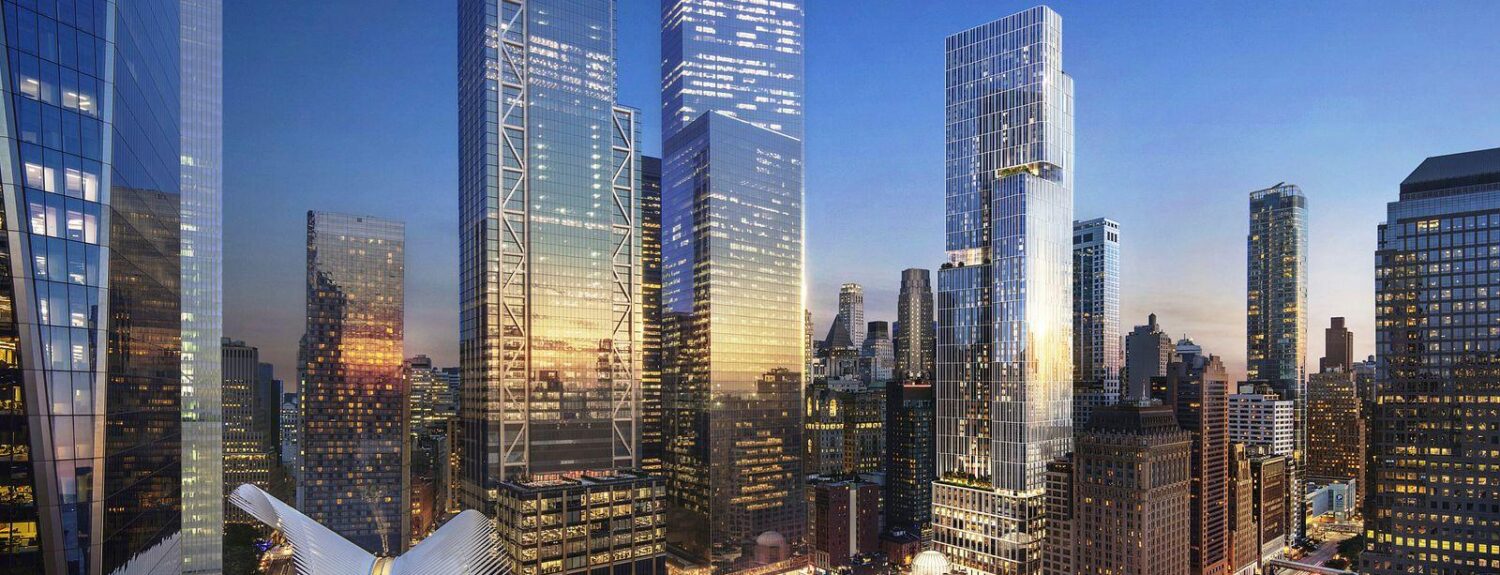Business
An affordable housing fight in financial district
By Samuel Espinobarros
The 80-story high-rise slated for what not is a bare plot at Cedar and Greenwich Streets will host 5 World Trade Center, whose developers have committed to reserving 25%, or 330, of 1,325 proposed residential units as affordably priced apartments.
“That’s not enough,” said Jill Goodkind, co-founder for 100% Affordable 5WTC, a coalition aiming to have every unit at 5 World Trade Center affordable housing.
“There were thousands and thousands of affordable apartments that have just disappeared,” said Goodkind, reflecting on her 30 years of living in the Lower Manhattan neighborhood, where the well-off greatly outnumber the less monied tenants.
Silverstein Properties and Brookfield Properties, jointly, partly using federal dollars to rebuild the World Trade Center. “To make seventy-five percent of that building unneeded luxury on this public land, it’s a battle,” Regalson added. “To say that it’s not justifiable to make this tower one-hundred percent affordable is just short-sighted and only thinks about profits. It doesn’t take into account the viability of living in the city and supporting citizens who have every right to be there despite their income.”
Between 2017 and 2021, the five boroughs lost 100,000 apartments with rents below $1,500, while adding 107,000 apartments with rents starting at $2,300, according to a May 2022 New York City Department of Housing and Preservation report.
The fight for affordable housing doesn’t just involve building new units, it also involves preserving existing ones. Two blocks away, residents waging a battle to keep 109 Washington Ave. a fully rent-stabilized, 16-unit building.
“It’s been quite an ordeal,” said Esther Regalson, a resident in what is one of New York City’s relative handful of remaining tenements, initially housing wave after wave of mainly poor, European immigrants.
“It’s small, yet cozy. You can even see where the old tenement bathrooms used to be,” Regalson, a 38-year resident of that building, said, referring to what had been communal toilets.
“The rent is too high,” she added, of the current state of things, “and rich people have their pied-du-terres that they don’t even live in. It’s a shame, what I call in Yiddish a ‘shanda’ … We fought for the neighborhood after 9/11. We fought to have our neighborhoods back, to come back to our homes, and now we’re being priced out.”
Local historian and tour guide Joe Svehlak grew up in the neighborhood.
“The area has gone through three stages of forced renewal,” he said. “First in the ’40s during the construction of the Brooklyn-Battery Tunnel, then in the ’60s during the construction of the World Trade Center site, and finally the post 9/11 renewal to the area.”
Many of those tenement immigrants eventually left Manhattan — Svehlak’s own relatives did — for nicer places in Brooklyn and elsewhere. “There were those, however, who chose to stay,” he added. “They could walk to work, they could walk to Battery Park, they had the Washington Market right under their noses.” Places like that expansive produce market were the sort of amenities that helped make for a vibrant community.
That once vibrant neighborhood had been long gone by the time Regalson moved in.
“When I moved into the neighborhood in ‘83,” she said, “this area was not a neighborhood anymore. Through all these acts of eminent domain, we became this sort of cul-de-sac of remaining people.”
Born and reared in Lower Manhattan, 109 Washington resident Eddie Metropolis agrees with Regalson’s sentiment. He’s seen the changes firsthand: “From an ethnic melting pot to total gentrification … ”
He heard the constant, exploding dynamite that blew apart bedrock so that the original World Trade Center’s foundation could be laid. He heard the roaring engines of diesel trucks. Round-the-clock work, he said.
“I was a little kid, to me it was exciting, it didn’t bother me one bit,” he said. “As an adult now, would I have wanted to deal with that? No. It was a quality-of-life issue.”
Metropolis kept telling the story. “Where the World Trade Center is now, was once where my friends lived in tenements. They were forced out … You had businesses and residents move out in droves, but for some reason, the folks at 109 Washington remained.”


